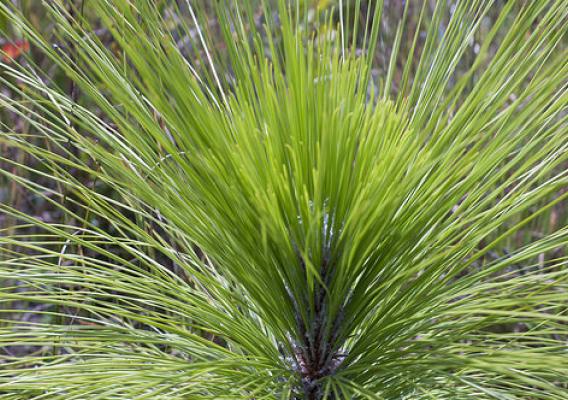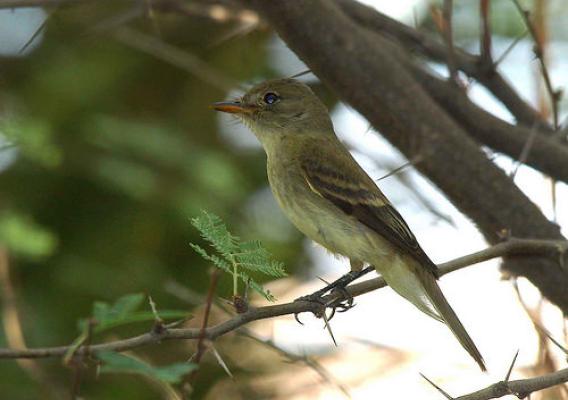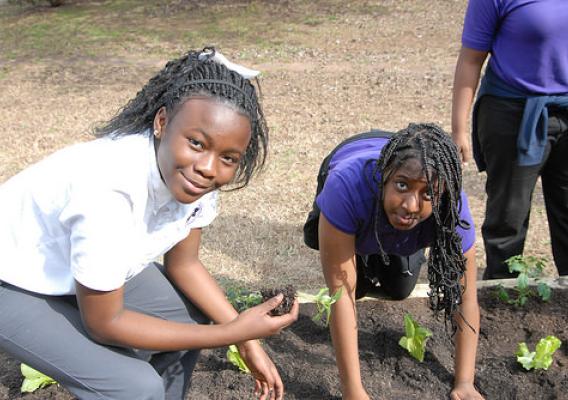The Nature Conservancy’s Apalachicola Bluffs and Ravines Preserve, an hour west of Tallahassee, Florida, protects nearly 6,300 acres of restored sandhill habitat. Young longleaf pines stand in thick waves of golden wiregrass. Wild turkey, bobwhite quail, gopher tortoise and Florida pine snake once again populate what 25 years ago were rows of industrial timber and bare sand.
About 50 people recently toured the preserve to see for themselves the beauty and benefits of the longleaf pine, many of them landowners interested in restoring stands on their properties. They learned how The Nature Conservancy hand planted millions of longleaf pine seedlings and wiregrass plugs.
Foresters from Florida Forest Service explained how regular prescribed burns promoted the growth of native groundcover and kept hardwood and invasive species in check. Biologists from Florida Fish and Wildlife Conservation Commission discussed how wildlife is managed in longleaf pine forests.










